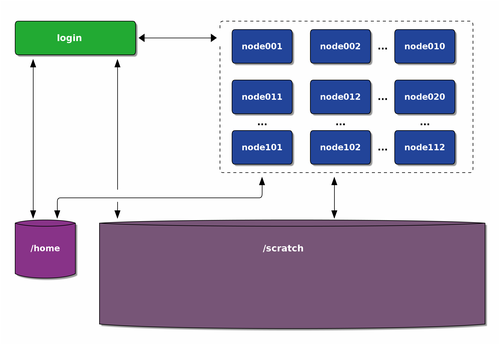What is an HPC system?
A High-Performance Computing or HPC system is a computer system designed to allow resource intensive numerical calculations to carried out. In general such system are used in batch mode, i.e. jobs are sent to a resource manager, which determines the order in which jobs are to be started and starts them when the necessary resources become available.
An HPC system consists in general of the following elements:
- a login node
- many compute nodes
- at least one global file system
The operating system used is normally some form of Linux, as is the case at FU Berlin. Therefore no programs which only exist for Windows or MacOS can run on the system.
Login node
This is where everyone who logs in lands. You should not run any computationally or memory intensive programs on this node. The CPUs and memory are shared by everyone who is logged in at a given point in time.
Compute nodes
Computationally or memory intensive programs are run on these nodes. CPU and memory resources are assigned exclusively to the programs. In order to access these nodes, you have to use the resource manager.
File system
Normally there is at least one global file system. Both the login node and the compute nodes can access this file system. Thus, for example, the same home directory for each user is visible on all nodes.

